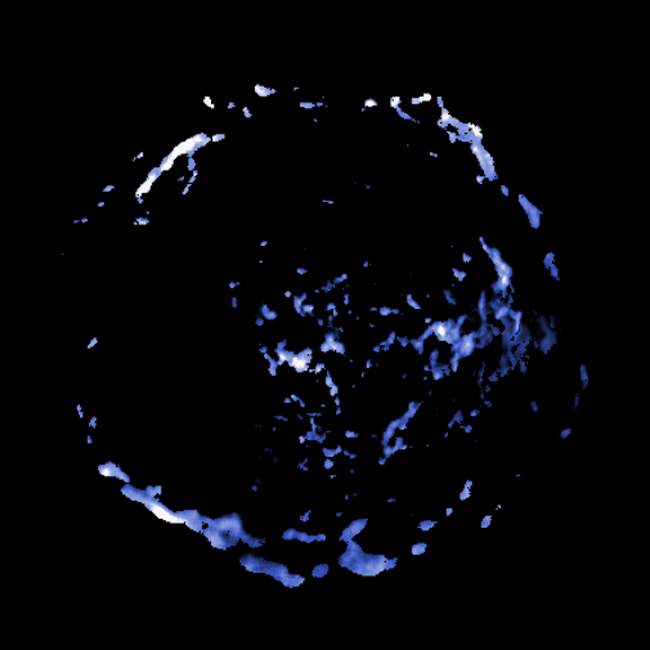
 Credit:NASA/CXC/MIT/UMass Amherst/M.D.Stage et al.
Credit:NASA/CXC/MIT/UMass Amherst/M.D.Stage et al.
Accel-a-Rama
Recent X-ray observations of supernovae remnants have pointed to these objects as the culprits behind the production of some cosmic rays. Now the Chandra X-ray observatory has given astronomers the most detailed view ever of this process, in the young, nearby Cassiopeia A supernova remnant. The image above was obtained by using a technique on a 1 million second Chandra X-ray image of the remnant to separate out the regions where electrons are being forced to incredibly high energies. The bright areas of the image above highlight these regions; the brightest regions are those where the electrons are accelerated to particularly high energies. The electrons are accelerated by crossing strong shock fronts produced as the fast moving material from the supernova explosion slams into the interstellar medium. They then spiral around lines of magnetic force swept up by the explosion and emit tell-tale synchrotron radiation. This process can be surprisingly efficient, and in the white parts of the image above scientists believe that the acceleration is nearly at the physical limit.
<
HEA Dictionary ● Archive
● Search HEAPOW
● Other Languages
● HEAPOW on Facebook
● Download all Images
● Education ● HEAD
>
Each week the HEASARC
brings you new, exciting and beautiful images from X-ray and Gamma ray
astronomy. Check back each week and be sure to check out the HEAPOW archive!
Page Author: Dr. Michael F. Corcoran
Last modified Monday, 26-Feb-2024 17:44:49 EST


